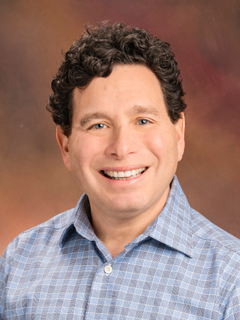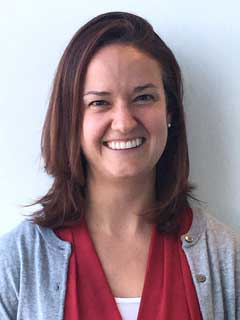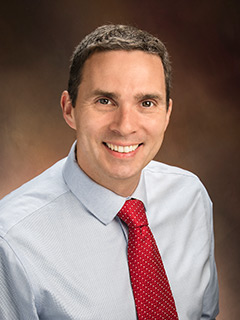HOW CAN WE HELP YOU? Call 1-800-TRY-CHOP
In This Section
Sickle Cell Disease, Concussion Prevention, Firearm Injury, Epilepsy Disorders

Landmark clinical trials conducted at Children's Hospital of Philadelphia and other sites informed the Food and Drug Administration's approval of two new gene therapies for sickle cell disease. Our news highlights also cover the real-time effects of heading soccer balls on young athletes, recommendations for holistic care for children following firearm injury, and new strides in understanding STXBP1-related disorders, one of the most common genetic epilepsy disorders.
FDA Approves Two Gene Therapies for Sickle Cell Disease
CHOP participated in rigorous clinical trials that helped to inform the FDA's approval of the first two gene therapies for the treatment of sickle cell disease for patients 12 years and older with recurrent vaso-occlusive crises. CHOP is already a Qualified Treatment Center offering lovotibeglogene autotemcel (LYFGENIA™, bluebird bio) and hopes to offer exagamglogene autotemcel (CASGEVY™, Vertex).
Sickle cell disease is a lifelong condition that causes intense pain due to deformed blood cells that can cause blockages in blood vessels and lead to strokes, organ damage, and a potentially shortened lifespan.

Alexis Thompson, MD, MPH
"For many years, a bone marrow transplant has been the only transformative option for treating patients with sickle cell disease, and a limited one, as not all patients have a suitable donor," said Alexis A. Thompson, MD, MPH, chief of the Division of Hematology at CHOP. "Now, after decades of limited progress in treating sickle cell disease, we have reached a historical moment with two new gene therapies."
Exagamglogene autotemcel is the first FDA-approved therapy developed with CRISPR technology, which enables the patient to produce a different form of hemoglobin in their red blood cells by editing DNA within the patient's own cells.
Lovotibeglogene autotemcel treats the underlying cause of sickle cell disease by adding a functional gene that enables production of adult hemoglobin, which does not form into the crescent shape associated with the disease.
Read more in this CHOP news release, and hear from a young patient with sickle cell disease in this video.

Kristy Arbogast, PhD
Minds Matter Researchers Conduct 'Real-time' Study of Soccer Players Heading the Ball
CHOP researchers in the Minds Matter Concussion Program are exploring whether regulations that went into effect in 2015 go far enough to protect young athletes from concussions and other head injuries. The U.S. Soccer Federation eliminated "heading" in soccer (a technique where players use their heads to direct the ball) for children under age 10 and limited heading during training for players ages 11 to 13.
Kristy Arbogast, PhD, research director of the Minds Matter Concussion Program, and Colin Huber, PhD, former research fellow with CHOP's Center for Injury Research and Prevention, conducted a comprehensive "real-time" study of heading the ball among experienced soccer players, ages 13 to 18. They observed teen athletes as they performed three soccer-related tasks while wearing an instrumented mouthguard that measured the force of the ball hitting their head.
The researchers conducted comprehensive neurophysiological exams before, immediately following, and 24 hours after practice to look for changes in balance, pupil response, eye tracking and overall health.
"Our tests showed that adolescent players can use their head in soccer, but they need to be properly trained to do it safely, and use the move efficiently and sparingly," Dr. Arbogast said.
CHOP plans to expand its research to learn if there are differences in injury rates and recovery time between boys and girls related to heading the ball and how to make soccer safer for everyone.
"We want to educate coaches, parents, and young athletes to better recognize head injuries, get injured kids off the field faster, and give them the tools they need to fully recover," Dr. Arbogast said.
Read the full story in Children's View.

Joel Fein, MD, MPH
More Studies Needed to Support Holistic Approach to Childhood Firearm Injuries
CHOP researchers Joel Fein, MD, MPH, co-director of the Center for Violence Prevention, and Rachel Myers, PhD, MS, associate director of the Center for Injury Research and Prevention, and co-authors from across the United States recommended a holistic approach to caring for children who are victims of nonfatal firearm injuries. They are part of the Children's Hospital Association Research in Gun-related Events (CHARGE) collaborative, a multidisciplinary effort that examines children's needs following nonfatal firearm injuries beyond physical care.

Rachel Myers, PhD, MS
An evaluation of health service utilization and expenditures among children after a firearm injury revealed a lack of information about mental health care. The group recommended specific actions in advocacy, clinical care, and research to address childhood firearm injury designed to improve understanding of the full range of effects of nonfatal firearm injury on children and families and inform prevention and treatment programs.
"Given the overwhelming impact of firearm injury among children, coupled with the paucity of research on firearm injuries in comparison with other causes of childhood injury and death, it is our collective goal as a pediatric clinical research and advocacy community to study and subsequently implement a biopsychosocial model that comprehensively addresses the needs of children, families, and communities after firearm injuries," the authors wrote.
Read more about the study published in Pediatrics. Learn more about recovery after violence and trauma on the Research in Action blog. Find out about CHOP's research into gun violence prevention.

Ingo Helbig, MD
Researchers Gain Insight to Design Clinical Trials for Common Epilepsy Disorders
Seizure patterns and response to treatment strategies helped clinical teams determine epilepsy and developmental trajectories for patients with STXBP1-related disorders, one of the most common genetic epilepsy disorders. Identifying treatment windows and outcome measures will be critical in the design of clinical trials for new therapies that target the STXBP1 gene.
"By assessing epilepsy trajectories and developmental endpoints across the age span, this study helps establish an important baseline to help inform personalized treatment options and enable us to meaningfully interpret future therapeutic strategies," said first study author Julie Xian, a data scientist with the Epilepsy Neurogenetics Initiative (ENGIN) and the Center for Epilepsy and Neurodevelopmental Disorders (ENDD).
STXBP1-related disorders cannot be diagnosed based on clinical features alone and require genetic testing to confirm. Even with genetic testing confirmation, the epilepsy and developmental trajectory of these disorders varies greatly, making it difficult to design clinical trials because the benefits of therapy cannot be uniformly measured across patients.
The research team used machine learning tools and new methods they developed to assess 162 individuals with STXBP1-related disorders over 1,281 cumulative patient-years of seizure and developmental histories, the first time such a large amount of data was gathered for a developmental disorder. They developed a "virtual clinical trial" concept using clinical data they had reconstructed of the entire lifespan of their patient cohort.
"This study is another major milestone in our commitment to patients and families diagnosed with STXBP1-related disorders," said senior study author Ingo Helbig, MD, co-director of ENGIN and clinical director of ENDD. "Most importantly, we were able to demystify the complex disease pattern in STXBP1 disorders to make these conditions ready for clinical trials."
Read more about the study findings, published in Brain and in CHOP News.
ICYMI
Catch up on our headlines from our Dec. 8 In the News:
- CHOP Scientists Seek to Make CAR T-cell Therapies More Accessible
- Discovery of 3D Protein Structure Could Improve CAR Therapy
- Penn Honors Outstanding Researcher with Red Ribbon Award
- Three Novel Genes Linked to Neurodevelopmental Disorders
- American Pediatric Society Selects Five New Members from CHOP
Keep up with our news, stories, and updates in real time by following us on X, Facebook, LinkedIn, or Instagram. Meet the minds behind the science in the Bench to Bedside podcast. Or subscribe to our newsletter to receive an email every other Friday by signing up here.


